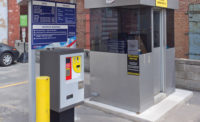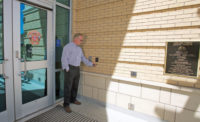Overload and Fuzzy Alarms
Today’s security command and control (C&C) centers run the risk of overwhelming monitoring personnel with too much data. Information pours in from exterior perimeter protection; heating, ventilation and air conditioning; fire alarms; elevator status; vehicle tracking; communications; visitor management; mustering; and site-specific systems such as asset control and asset tracking. The potential for fuzzy alarms increases. A fuzzy alarm, such as a fence sensor that could be triggered by several non-threatening stimuli, requires dispatchers to decide whether to send security personnel to respond to the alarm.
According to Bill McGinty of Johnson Controls Security Solutions of Milwaukee, Wis., some techniques help maximize dispatch and response personnel. These include: filtering, automating, combining, prioritizing and presentation.
Filtering
Filtering is a design technique that removes extraneous data from the dispatcher's C&C responsibilities. Many access control systems, for example, use filtering. While it is necessary to maintain a record of all card transactions for audit purposes, there is no need to display or print valid transactions in real-time. Only card activity presented is that with which a dispatcher must interact, such as an attempt to use a reported lost or stolen card. Review all systems in the C&C center to identify opportunities to filter information being presented that does not require an immediate response.Automating
Where several systems can work in concert, automating the interaction of these systems can minimize response errors and allow faster processing of an event. A campus-wide emergency phone system combined with a modern graphical user interface display and global satellite positioning vehicle tracking is a good example. Once the emergency phone is activated, communication is established between the caller and the dispatcher. Immediately, a map showing the emergency phone's location as well as the location of all available response vehicles is automatically displayed. With no more than a point and click from the dispatcher, he or she is put in touch with the response personnel. At a higher level of automation, the phone activation and map could be sent directly to a display in the response vehicle.Combining
Security video is an example of a system suitable for combining with other systems to help minimize fuzzy alarms and greatly enhance the audit trail of events. Cameras can combine with tailgating detection equipment to identify tailgate policy offenders. Also, access control can be combined with HVAC to activate lighting and temperature controls without dispatcher intervention.Prioritizing
Alarms in which a dispatcher must become involved should be given priority status in relationship to all other alarms, thus relieving the dispatcher from diverting attention when unnecessary. For example, one electrical fire can generate a fire signal, power loss signals, alarm signals from doors that are automatically released and HVAC alarms as fans and dampers go into smoke control mode. By prioritizing these alarms, a dispatcher will have a clear direction as to the order in which these alarms should be addressed. Combine prioritizing with predefined, on demand, electronic dispatch instructions and point and click dialing, large amounts of time can be saved in an emergency, while minimizing the potential for error.Presentation
When defining a function of a C&C center, presentation can have two meanings. The first is the physical design of the center, how displays and controls are positioned to enable the dispatcher to respond quickly and efficiently to events as they occur. This should be reevaluated each time a new system or function is added to the C&C center. Failure to evaluate the effect of adding a new controls and command capability can have a disastrous impact on a once functional center. The second meaning of presentation is the various means in which a dispatcher interacts with the system. The GUI must be customized to accurately reflect the various systems represented. Point and click on-screen commands with drop down menus allow a dispatcher to concentrate on the function aspects of the job, not searching for several subsystems to deal with a single event. Finally, as C&C centers continue to move towards a true "single seat" operations concept, integrators must become qualified on more and more systems so that they can design, install, and service these diverse yet highly related systems.Looking for a reprint of this article?
From high-res PDFs to custom plaques, order your copy today!





